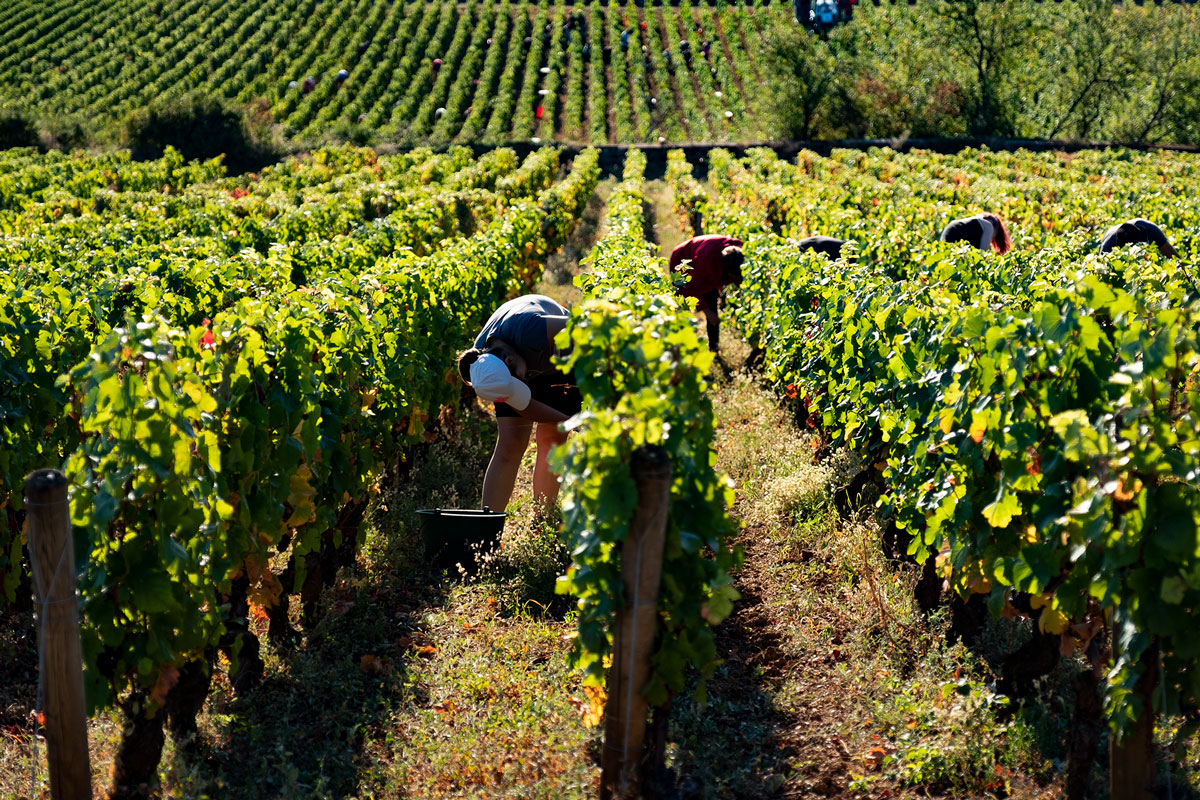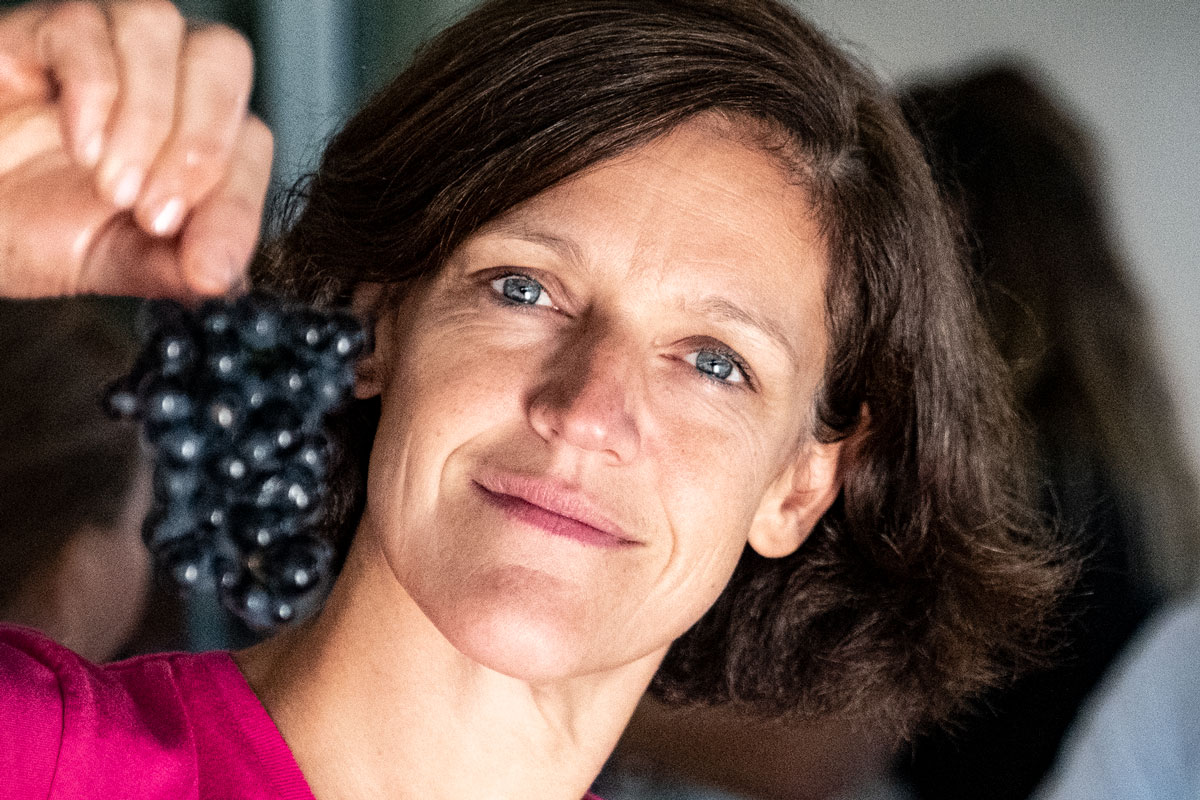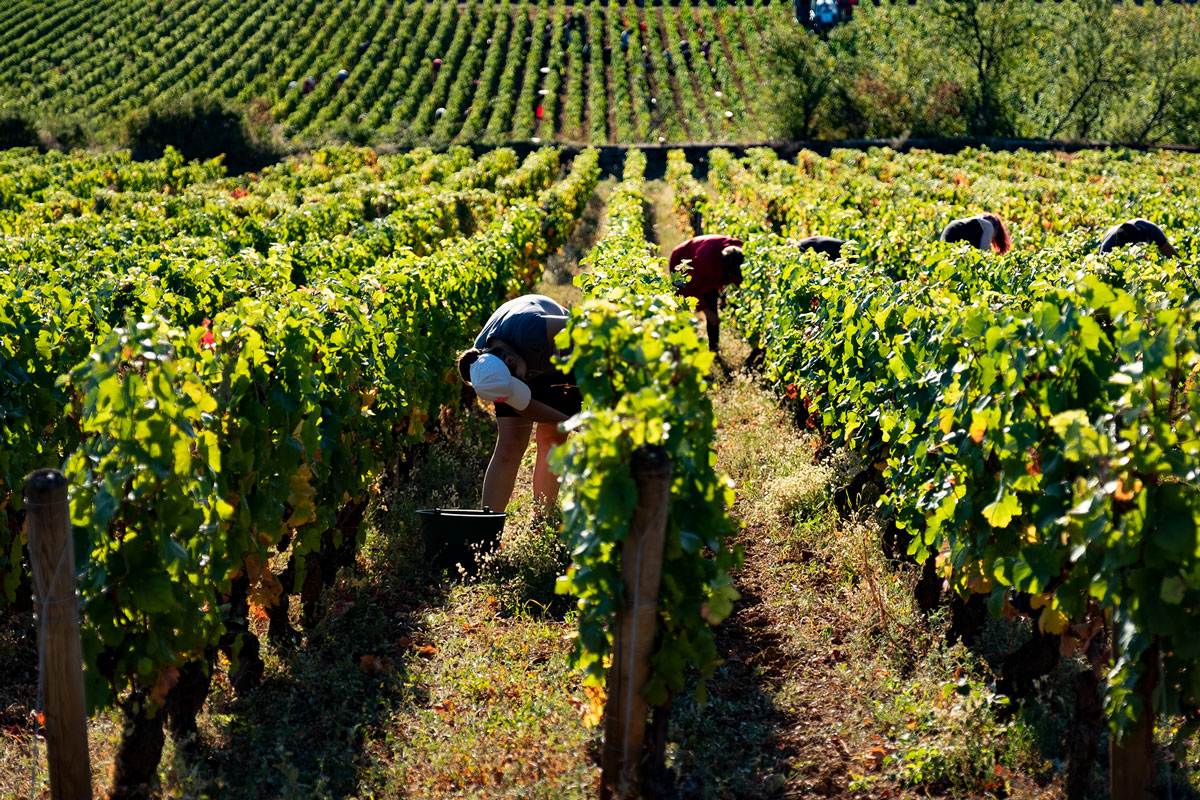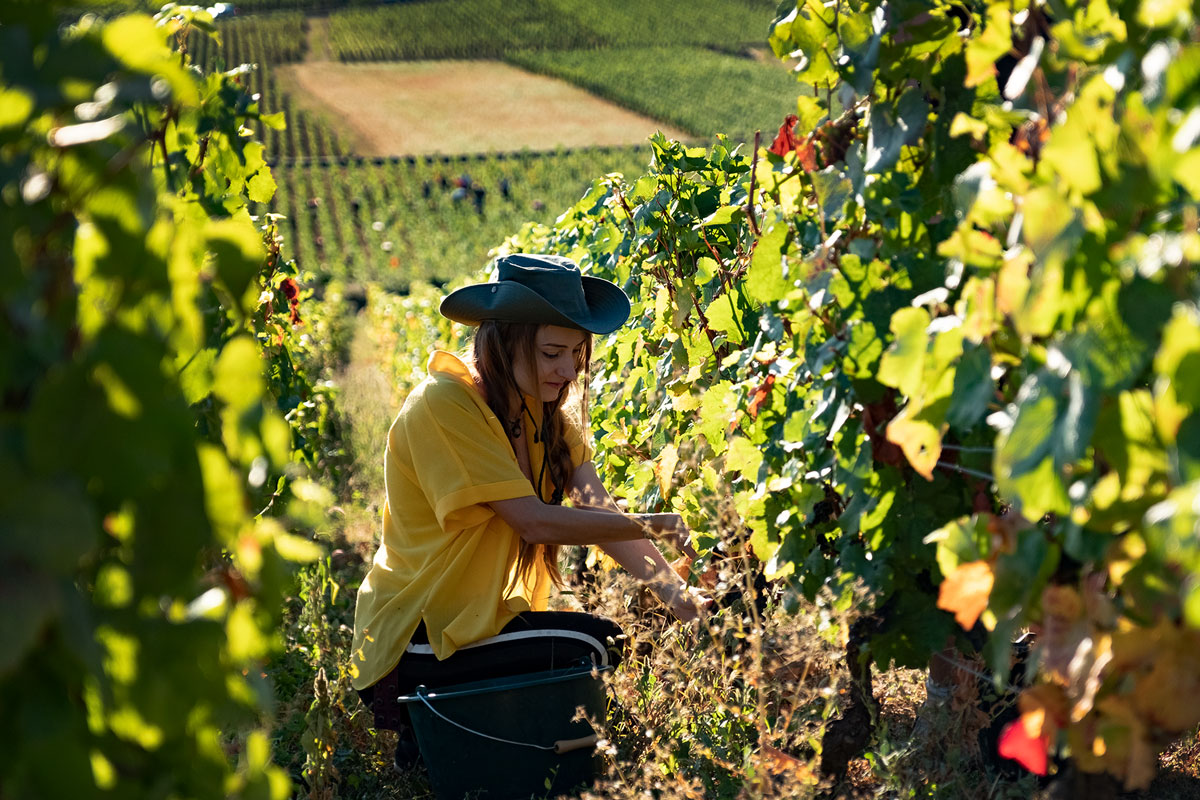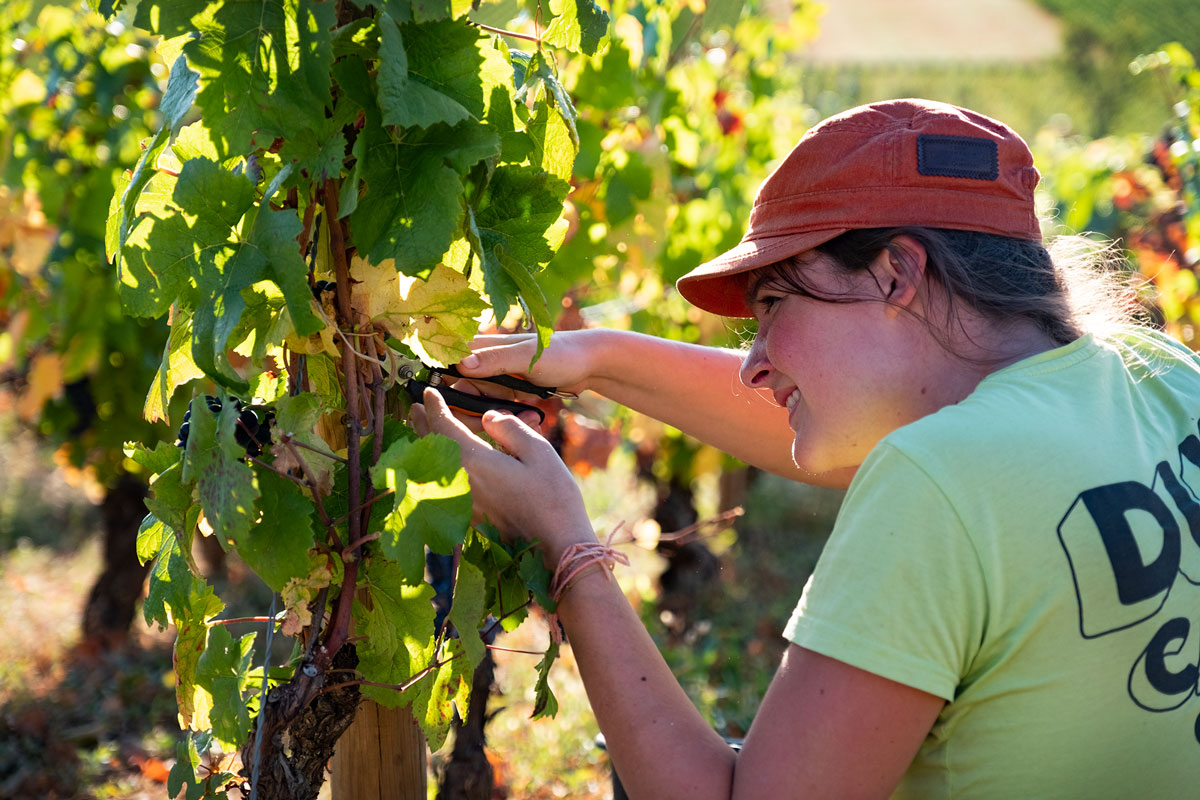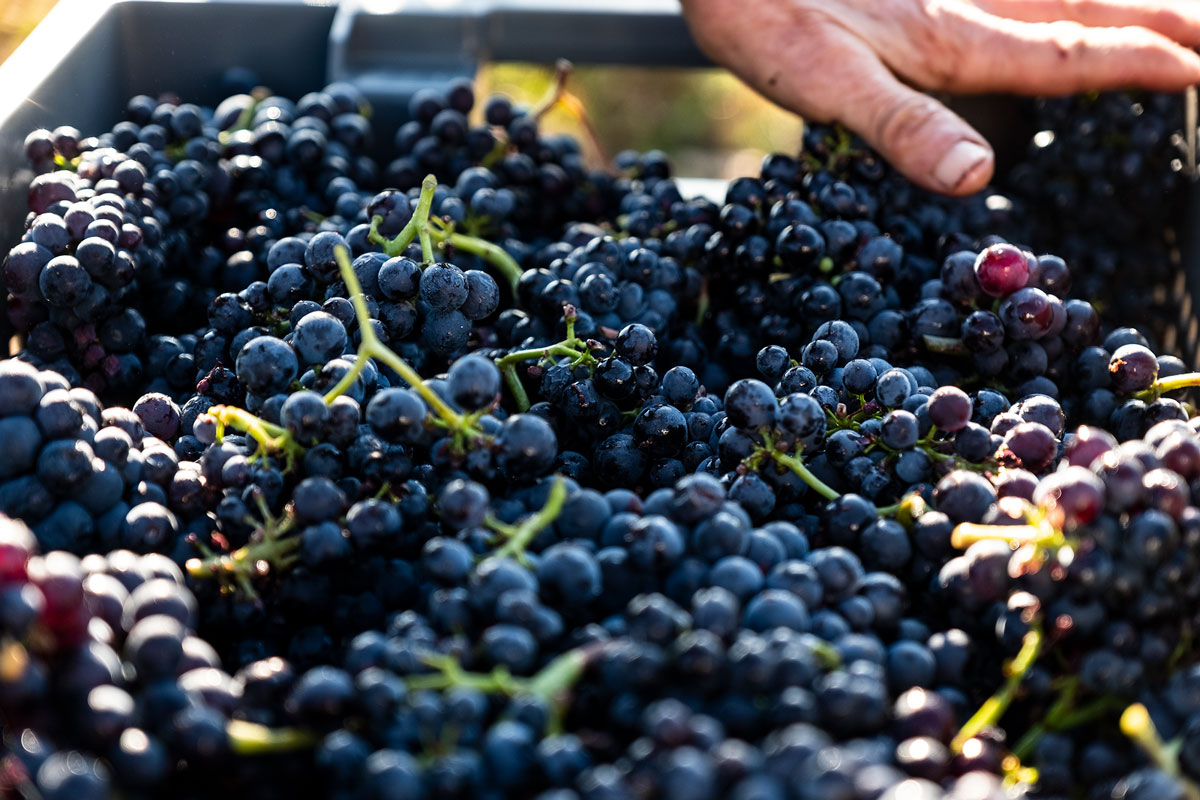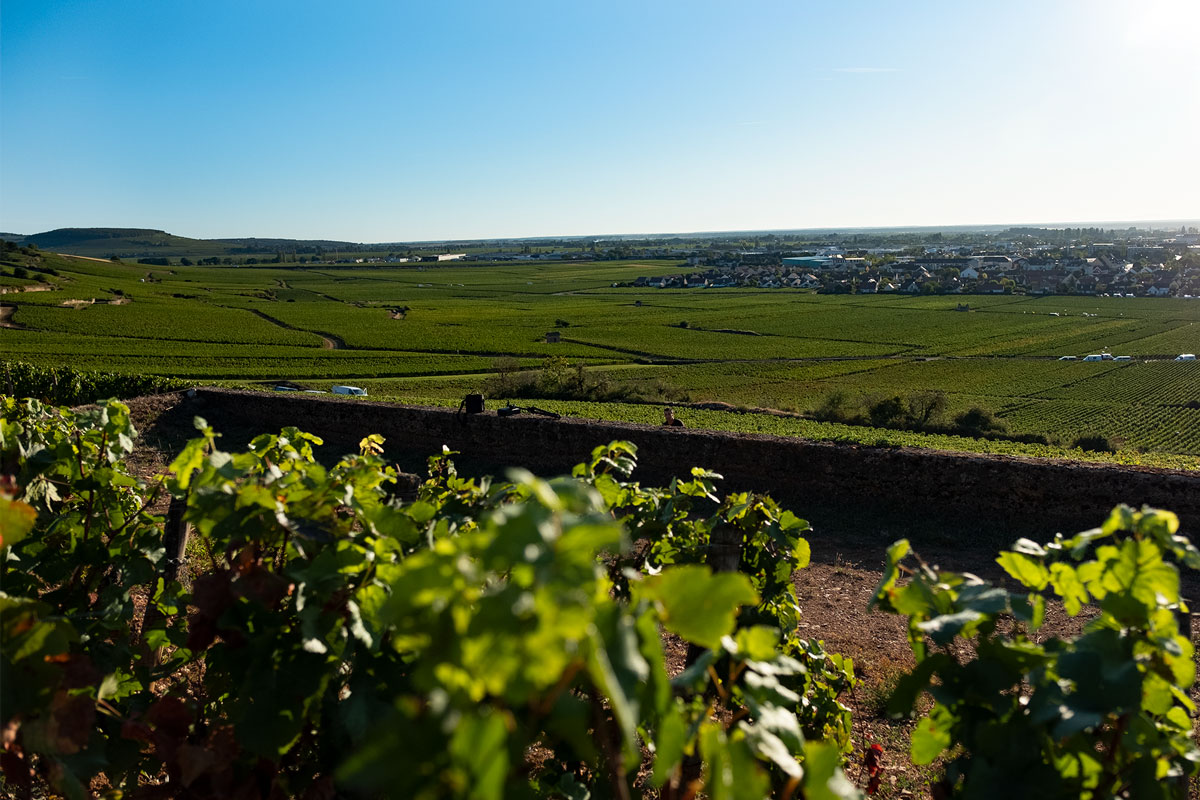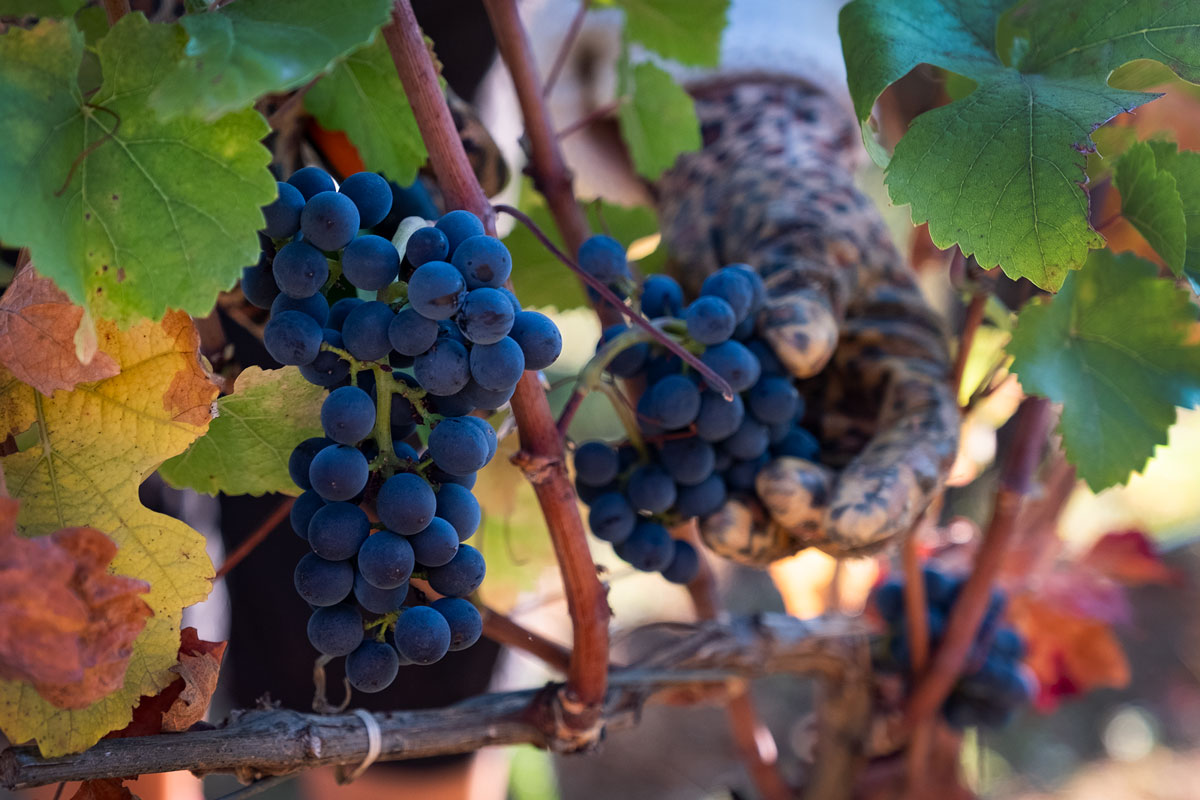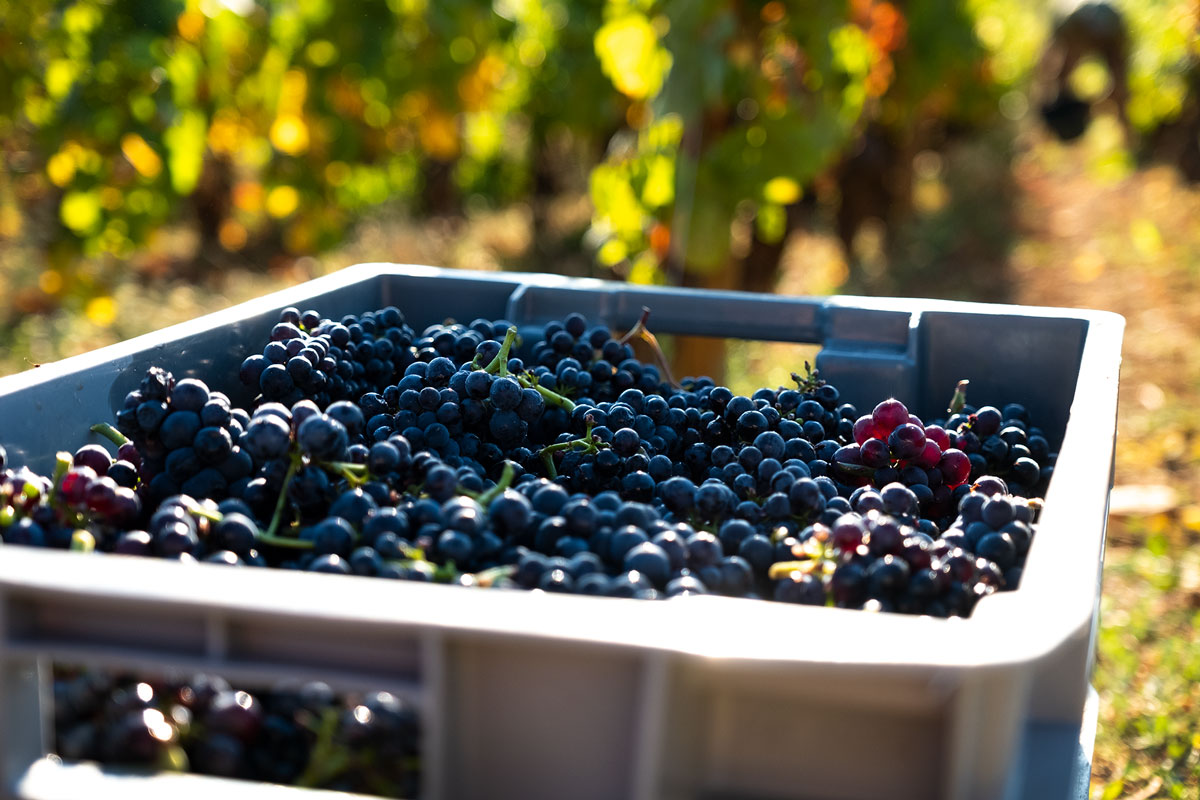The 2019 vintage at Domaine des Hospices de Beaune:
solar and very Burgundian
Review and analysis of the 2019 vintage by Ludivine Griveau
Climatology
The 2018 post-harvest skies pick up with difficulty in autumn-winter. In fact, unlike last year, the rainfall deficit is already being felt in December and January. Already, the heterogeneity between sectors is becoming apparent: while Vosne-Romanée is only 6mm below normal, Chassagne-Montrachet was 100mm below normal at the end of March. Between 50 and 70% of water was missing in January and February, i.e. almost 280mm instead of 360mm. This unusual water situation was combined with extreme mildness: autumn-winter temperatures were almost 3°C above normal, the highest for 25 years. We had to wait until January to feel the sting of a few days of frost (around ten), but they were not consecutive and hardly ever fell below -5°C. As a result, the vines were pruned with over 140 hours more sunshine than normal for the season.
Another year with very few days of negative temperatures; there was no real winter. By the end of March, the vegetation had benefited from so much sunshine that the vines were already off to a rapid start.
The cold of early April set the record straight and slowed vine development considerably. We slept with one eye open on the night of April 5... frost threatened... -3°C from midnight and for more than 6 hours, with high humidity... what was long mistaken for a spring frost was in fact a black frost, and the damage was very heterogeneous according to stage. Couple this with water heterogeneity (between plots) and growth heterogeneity (on the same shoot), and you'll understand why it's difficult to identify damage to the future harvest at this stage. Another bout of frost, announced for April 14, mobilized the troops like never before: all along the coast, from Chablis to Macon, candles were blazing, fans were in operation and smoke screens with straw bales were tolerated (ministerial decree)... As the hydric context was weaker than previously, the damage caused was not significant. Precipitation was well above normal, while sunshine levels and even temperatures, paradoxically, remained close to seasonal averages. However, it wasn't until the last dekad of April that some fine spring-like days warmed the atmosphere and growth resumed. In a change of direction, 2019 was one of the latest vintages, as all these hazards considerably slowed down growth.
In May, vegetation had a hard time growing: barely 1 leaf every 6 days during the first weeks. Temperatures were abnormally cool, and it took until the middle of the month for the average temperature to approach 15°C. Degrees are in short supply, but so is rain! May also saw a shortfall in rainfall, with only 40mm instead of the average 90mm. While there was no shortage of sunshine in terms of light, it was coolness that prevailed. The late tendency of the vintage is confirmed, with about 20 days behind 2011 (the earliest vintage of the decade).
June will be the month of contrasts! The first days are very hot and rainless. Temperatures even exceeded 30°C in Côte de Beaune on Sunday June 2. Despite low water availability in the soil, summer takes hold. Rainfall was again very irregular from one area to another. The vegetation is greening up and the first scents of flowers can be felt on the first weekend of June. As stated by the Chamber of Agriculture on June 12: "Flowering is already well underway". Despite a few chilly mornings (9°C in the Hautes Cotes), the month ended much brighter than average (+53h). In mid-June, once again, rainfall was the talk of the town: although overall it was within the norm this month, it sometimes fell in heavy showers, as in Savigny, sometimes bringing 25mm in 1 hour. Difficult to manage ploughing and the passage of high-clearance tractors. On average, the flowering ended around June 18 in the hills. The weather was so changeable that, by June 25, it was not uncommon to see berries already tied next to flowers that had just passed on the same plant! It's too early to say, but it's in the back of our minds! The last two weeks of June were very hot, even scorching from July 26 to 1: 39°C under cover and an average of 28°C over 7 consecutive days. The light rainfall around June 21-23 was enough to trigger active vine growth; the vines seem to be armed and incredibly resilient to this heat wave. If ever there was a need to illustrate the wide temperature variations in June, note that it ended up only slightly warmer than normal!
July was hot, almost 2°C above normal. The heat came in waves, and although it was initially well tolerated by the vines, which continued to grow well, the first symptoms of drought were visible on the young vines around July 16. The weather was hot (over 80 hours of additional sunshine), but also dry. The "rainfall points" in our Chamber of Agriculture bulletins indicate a water deficit of over 110mm since January and 140mm since October... It's about 45% below normal since April. What little rain there is falls in the form of thunderstorms, some of them violent, and we experience 2 episodes of hail: on July 7 in Savigny and Chorey, and on July 14 on the hill of Corton. More fear than harm, but between 10% and 15% of the harvest was still lost. Cumulative rainfall remained variable, but the heavy rains of July 27 and 28 saved the day. At last, veraison has begun in earnest. Already, we have the feeling that the vintage may not be so late: the fruit on the vines of the Domaines des Hospices de Beaune could well be ready to harvest around September 10-12, instead of the 15-20 envisaged at the end of flowering... To be continued!
During the first dekad of August, the weather was more in keeping with the season, with temperatures finally tolerable (18-26°C). Between August 5 and 19, the rains began to fall, and the berries were finally able to put on some weight! By August 20, the bunches had turned red for the Pinot Noir and were slowly turning golden for the Chardonnay. The wind has been our ally, drying the leaves between rainy spells. With summer temperatures returning around August 25, ripening is progressing apace: the "delay" is now only 10-12 days compared with 2018. Moreover, the heterogeneity of stage advance observed since flowering is confirmed, and will continue until the week before harvest! Sanitary conditions are excellent in all our plots. We have no choice but to wait and watch as ripeness checks begin.
The sunshine at the beginning of September is beating records, and the rains are once again absent. By September 4-5, we're now certain that 2019 won't be so late, and we're ready to start harvesting, as the grapes are ripening in bursts of 1 to 2% (v/v) per week. Even though the vines are protecting themselves, the first signs of water stress are (only!) beginning to show: some berries are wilting, and some leaves are turning yellow. Nevertheless, the vines are keeping up their strength, and the fruit is becoming increasingly tasty.
Summarizing climatic episodes has never been so difficult as in 2019! It's by "listing" the long series of climatic events that the vine has had to endure in one year, that we become even more aware of just how incredibly resilient this plant has been. It's a safe bet that it will need a good winter to recover.
The vegetative cycle
The first signs of renewed activity can be seen from the end of February until mid-March. After very mild weather during this period, by March 25, the bud swelling stage had been reached in the cotton. We can even find a few green tips here and there in young vines or in early-ripening areas (clos, etc.). By April 1, it's not uncommon to be 10 to 12 days ahead of the average bud-break date, but the cooler weather returns and slows the pace considerably. The nights of April 5 and 14 left us shaking our heads... -3°C on young leaves .... And this over a much longer night than a "classic" spring frost. The vines take a beating. Growth slowed considerably. Nothing grew from around April 6 to 17, as if the plant had gone back to sleep. We had to wait for the mild temperatures of April 20/25 to start seeing signs of recovery, with the first 2-3 leaves spreading out. We're already seeing a wide disparity of stages, not only within the same plot, but also on the same vine!
At the beginning of May, the foliage becomes denser; at last, the Côte changes face and turns green. The Chardonnays have 4-5 spreading leaves and the Pinot Noir only 3-4. This is also the period when we start keeping a close eye on downy mildew, which has not yet shown up. From May 15 onwards, the sunshine allows the growth to pick up steadily, and we can finally begin our green work:
The small branches emerging at the base of the vines are removed, as are the double buds, in order to promote uniform foliage density later on. This year, disbudding is being carried out sparingly.
These decisions by the vineyard manager and the team are based on careful observation of each plot: as soon as the inflorescences come out, we anticipate a moderately abundant harvest at this stage, so load regulation by disbudding must be carried out carefully and on a case-by-case basis. At the beginning of June, vigor and growth finally began to develop, and the first flowers were visible around June 2-3 in the earliest areas (Volnay 1er cru Les Caillerets), or in the most homogeneous plots of the estate in terms of vegetative stage (Pommard 1er cru Les Épenots). The hot weather at the beginning of the month accelerated shoot elongation, but not bunch pruning! By the end of the first dekad of June, flowering is well advanced. At this stage, we count 13 leaves spread, and the flowers of the Chardonnay plots fill our visits to the vineyards.
At the same time, we start the first pruning of the branches, in order to prepare the bracing and guarantee, for the future, perfect organization of the shoots, fruit and foliage. The rains, often in the form of heavy showers, have led to increased growth of the internodes, which invade the trellising. A long and meticulous process of leaf removal then began in mid-June, giving the grapes time to get used to the sun if necessary. The instructions are clear: we remove the internodes to aerate the vegetation, plus a few leaves if necessary. However, the aim is to leave sufficient plant cover to benefit from its "shield" and/or "parasol" effect. What's more, treatments, all of which have been ORGANIC since 2016 on the entire estate, will be all the more effective because they are better targeted on the fruit zone. This prophylactic approach will be a great help in the fight against powdery mildew, which is likely to take up residence on the foliage this year.
Here we are in mid-June, flowering is drawing to a close, and with it comes its share of stage heterogeneity: on June 20, the Volnay 1er Cru grapes were already at the "lead berry" stage, while the Beaune 1er Cru Bressandes had only just begun to drop their caps. The coulure is considered to be rather significant, whatever the sector. We fear for our yields, as the chaotic weather at the end of flowering has somewhat "disrupted" fruit set.
The end of June - beginning of July took a completely different turn: the heatwave, in a hygrometry that was nonetheless favorable, enabled explosive growth. This year's wind was very strong, weakening the branches and requiring solid stapling. Trimming is carried out carefully to avoid scalding. Despite the sweltering heat and dry weather, the berries are swelling visibly, and it's not unusual to see bunches closed by July 5-8. Day after day, we have the feeling that the differences in stage are being "erased" and that intra-parcel homogeneity is gaining ground. However, it is not uncommon to observe numerous poorly-formed berries and millerandage... a sign of modest yields. Summer rainfall will be a determining factor, so we're keeping an eye on the skies.
Fortunately, hail damage on July 7 in Savigny and July 14 in Corton was limited. The leaves were not torn off and the berries moderately affected... in any case, there was nothing to be done... only the wind and sunshine that followed will help the berries to dry and heal. By mid-July, the bunches were closed, but the weather was hot and dry: the first yellowing leaves could be seen in the very young vines, but the rest held up rather well and the leaves remained a shimmering dark green. Although growth has slowed down, this does not prevent the canopy from remaining active, and the first green berries appear around July 22-25. The week of July 20 / 25 was a scorcher, with the 2nd heatwave in sight. We limit trimming and ploughing to avoid scalding; we welcome the rains at the end of July as a blessing! They will have the double advantage of triggering veraison, which was just waiting in its starting-blocks. As veraison progressed (from August 5 to around August 22), sanitary pressure decreased, and with it the plant's susceptibility to disease. While mildew was virtually absent this year (due to lack of water), powdery mildew was the focus of our attention. Organic viticulture is a success: the vines at Domaine des Hospices de Beaune are healthy and beautiful. The fruit is slowly filling up with color and sugar, and the leaves are green, allowing for efficient photosynthesis. The sun and wind are helping to concentrate the sugars, as well as the acids; this reassures us, all we have to do now is wait.
From August 27, we began our ripeness checks, which confirmed the immense heterogeneity of this vintage. More than ever, analysing each parcel will be decisive in making the right decision about the harvest date. Pommard is further ahead than Beaune! Volnay remains true to itself, with a verified earliness. The Côte de Nuits goes one step further, ripening faster than Corton! This time it's certain that deciding on the harvest date will be a headache and an exercise in cool-headedness! So we decide:
1 - to forbid ourselves nothing: after all, if Corton has to wait!
2 - to taste all the fruit: the Pinot Noir skins are famous
3 - to analyze the juices: the acidities are holding up, good news!!
4 - to decide: and off we go!
So we're harvesting earlier than planned: on September 6 at Chaintré for the Pouilly Fuissé; then from September 9 for the Côte d'Or Chardonnays, which progressed even faster than the Pinot Noir at the end of the cycle. The reds enter the winery on September 12, with Volnay and Pommard leading the way! The red grapes are in near-perfect health, delicious with crisp skins and intense flavors. In Pinot, only dried grapes are carefully sorted, and in 12 days, all 60 hectares are harvested. Extraction of color and tannins from the skins is optimized and facilitated by the excellent ripeness of the skins. Intense fruit aromas fill the winery from fermentation through to devatting. The Chardonnay is fruity and very sweet, almost syrupy, but with incredible acidity! The perfect vintage here too!
All fermented smoothly, both the whites and the reds, despite the sometimes slightly high alcoholic degrees, which in no way hindered the fermentation kinetics. This retained acidity (despite high sugar levels) seems to be the common thread running through this vintage, which is superb in both colors. This is why we have the happy feeling of having a "very Burgundian vintage", despite its very "sunny" side. A more than successful marriage between the Sun and Burgundy!
Interview #1 - first assessment at harvest time 2019
Interview #2 - Vinifications and styles of the 2019 Hospices de Beaune wines
Interview #3 - winemaker exchanges: Ludivine Griveau and Cyrille Jacquelin taste the 2019 wines being aged at Albert Bichot
At the end of June 2020, Cyrille Jacquelin shares a moment in the Albert Bichot cellars with Ludivine Griveau, régisseur of the Domaine des Hospices de Beaune. An opportunity to take stock of the 2019 vintage currently being aged, between technical information on the wines and memories of the vintage. A must-listen video to immerse yourself in the hushed atmosphere of Albert Bichot's Burgundy cellars.
Photo gallery: the 2019 vintage at Hospices de Beaune
How to buy at the Hospices de Beaune auction with Albert Bichot? 2 options for a unique experience with us
Buy a full barrel (288 bottles)
or a fraction at the next
Hospices de Beaune auction
52 EXCEPTIONNAL WINES TO CHOOSE FROM
DEDICATED CUSTOMER SERVICE
FROM JUST 72 BOTTLES (1/4 BARREL)
LIVE A UNIQUE EXPERIENCE
Buy at the next Hospices auction
from just 1 bottle, exclusively with Albert Bichot
ONLINE PURCHASE OF 2 WHITE OR 3 RED WINES
SELECTED BY ALBERT BICHOT
CUSTOM LABEL OPTIONAL


















